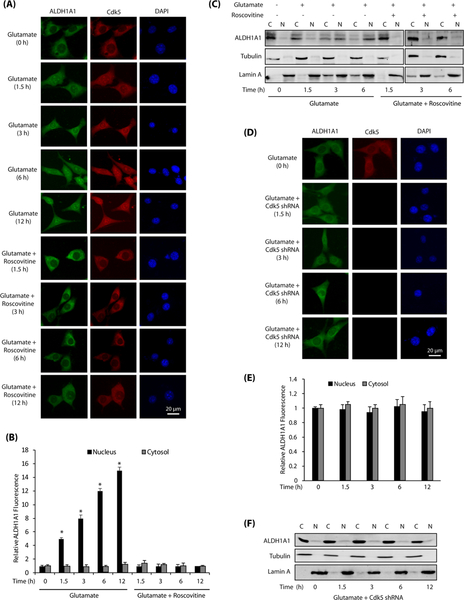Fig. 2.
Cdk5 promotes nuclear localization of ALDH1A1 upon glutamate stimulation. a Glutamate stimulates nuclear translocation of Cdk5 and ALDH1A1. HT22 cells were treated with glutamate for 0–12 h with or without roscovitine, followed by immunostaining as described in the “Materials and Methods” section. Representative pictures are shown. Scale bar, 20 μm. b Quantification of the subcellular localization of ALDH1A1 in the cell nucleus versus the cytoplasm. The graphs show the mean ± SEM of the relative fluorescence intensity with respect to control cells. *p < 0.05 versus nucleus fraction control analyzed by two-way analysis of variance. c Subcellular fractionation of ALDH1A1 in glutamate-treated HT22 cells in the absence or presence of roscovitine as described in the “Materials and Methods” section. Alpha-tubulin is the cytoplasmic marker and lamin A is the nuclear marker. N nuclear fraction, C cytoplasmic fraction. d Cdk5 knockdown inhibits nuclear translocation of ALDH1A1. HT22 cells were treated with Cdk5 shRNA for 30 h, followed by glutamate treatment for 1.5–12 h. e Quantification of the subcellular localization of ALDH1A1 in the cell nucleus versus the cytoplasm. The graphs show the mean ± SEM of the relative fluorescence intensity with respect to control cells. f Cdk5 shRNA-infected HT22 cells were treated with glutamate and fractionated as described in the “Materials and Methods” section. Alpha-tubulin is the cytoplasmic marker and lamin A is the nuclear marker. N nuclear fraction, C cytoplasmic fraction

